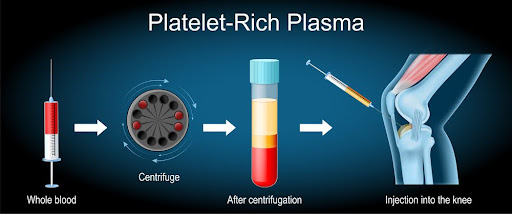Key Things You Might Not Know About Regenerative Therapies

Regenerative medicine has been getting quite a bit of attention in recent years. Some of the attention has been good, some of it, not so much. From a patient’s perspective, it is a wise idea not to reach conclusions about regenerative therapies based solely on news stories and blog posts. It’s better to do some independent research. It is better to ask questions.
If you were to visit the Lone Star Pain Medicine clinic in Weatherford, TX hoping to find relief from osteoarthritis, you might get a recommendation for platelet-rich plasma (PRP) therapy. PRP therapy is a regenerative therapy utilizing injections to offer patients pain relief.
Lone Star doctors would want you to be informed about regenerative therapies before you make a decision. To that end, here are some key things they might want you to know:
1. Mechanisms Still Aren’t Understood
Regenerative medicine is so named based on the long-held theory that PRP and stem cell therapies regenerate lost or damaged tissue. They may or may not actually do that. We do not know for sure. The mechanisms behind regenerative therapies still are not fully understood.
This doesn’t mean that regenerative therapies don’t work. A growing body of evidence shows they do. It’s just that we don’t know how or why they work. Research is ongoing, so perhaps we will have those answers at some point in the future.
2. Patients Donate Their Own Biological Material
Next, the FDA has given approval to regenerative therapies that rely exclusively on minimally manipulated autologous material. What does that mean in simple English? Let us start with autologous material. It is biological material supplied by the person being treated. Key Things You Might Not Know About Regenerative Therapies
Going back to the example of PRP injections for arthritis, you would provide the blood necessary to treat you. The blood would not come from a separate donor. As for the idea of minimal manipulation, the only thing done to the blood is separating platelets and growth factors. The blood is processed in a centrifuge in order to concentrate the platelets. The resulting material is then injected into the painful joint.
3. Side Effects and Risks Are Minimal
One of the best aspects of regenerative therapies is that their risks and side effects are minimal. Risk is all but eliminated by the fact that patients supply their own biological material. There is little to no risk of rejection or complications. As for side effects, you are looking at things normally associated with injections: injection site pain, inflammation, and potential infection.
4. Results Can Vary Significantly
One of the downsides of regenerative therapies is that the result can vary significantly. One arthritis patient might report significant and long-lasting relief after getting PRP or stem cell injections. Another patient may report no relief at all.
Due to variations, doctors tend to create customized treatment plans for each patient. The one-size-fits-all model just doesn’t work in the regenerative field. But that is not a bad thing. Each patient is treated as an individual rather than just another case coming through the doctor’s office.
5. Insurance Coverage Is Sketchy
Last but not least, insurance coverage for regenerative therapies is sketchy at best. Insurance companies tend to consider regenerative medicine an alternative. Most will not cover things like PRP and stem cell injections. That leaves patients to pay out of pocket.
Regenerative therapies show a lot of promise retreating musculoskeletal injuries and diseases. They might one day prove effective for treating everything from cancer to dementia to heart disease. We just don’t know right now. But research continues, so we could eventually see a wave of new regenerative therapies.
